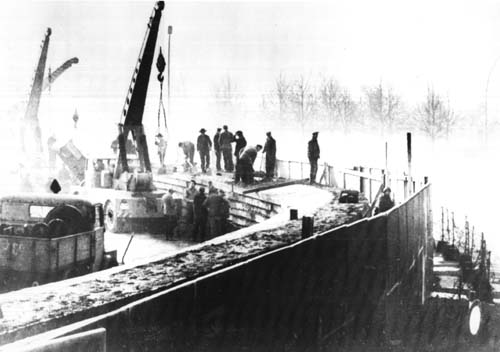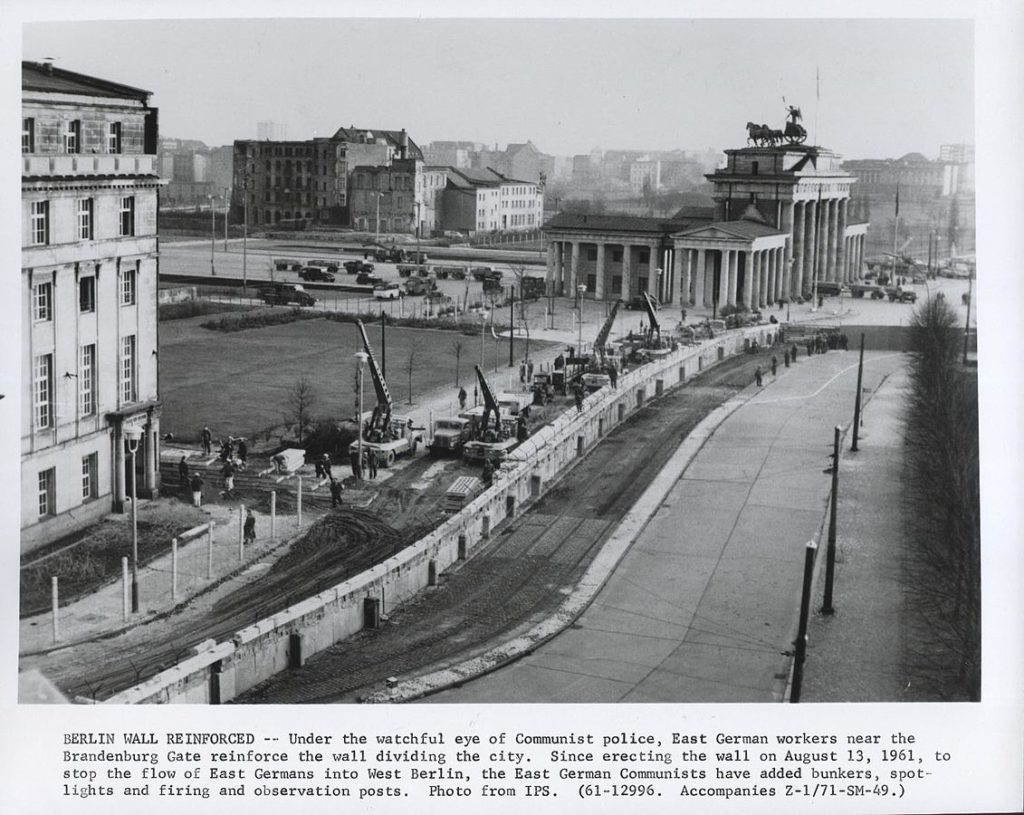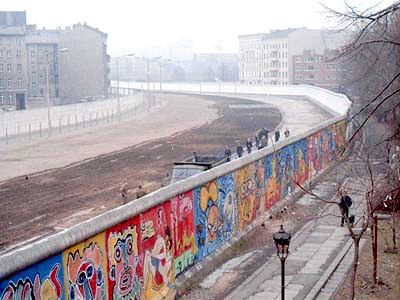Last week I wrote about the division of defeated Germany and its capital city of Berlin by the Allied Powers after World War II.
You may recall from that post that the eastern part of Germany was taken over by the Soviet Union, while the United States, the United Kingdom, and France controlled western Germany. The capital city was about 100 miles into the Soviet territory and was also split between the four powers.
After the Berlin Airlift, the tension between east and west Germany, as well as east and west Berlin, continued to grow. In 1952 the full border between east and west Germany had been closed, but people from the east could still get to the west if they went through Berlin.
And lots of people in the east believed that life was better in the west and left East Germany, known as the German Democrat Republic (GDR). If you’re old enough to have watched the Olympics before 1988, you have heard the name GDR.

Massive numbers of people were leaving the GDR, and that number was steadily increasing. Many of those leaving were professionals, teachers, doctors, scientists. This amounted to a brain drain on the communist system in the east, as well as being a huge embarrassment. It’s hard to say your system of government is the best is nobody wants to live under that system. Since the divided Berlin was the biggest problem in this drain, that’s where the government placed their solution.
One night in August of 1961, workers in East Berlin started putting up barbed wire fences and creating a wall from concrete blocks. They also shut down the subways and trains that the people used to travel between the east and west areas of Berlin. In the end, they left three checkpoints, three places you could get from one side of the city to the other. Assuming, of course, that you had the correct papers.
Check out this 6-minute newsreel about that night in 1961.
And there wasn’t just a wall through the center of Berlin. All of West Berlin was surrounded by wall, like a little island in the center of Soviet territory.
And the reason they said they created a wall? They said they were trying to keep our western ways out of their communism. They weren’t trying to keep East Germans in, they were trying to keep the rest of us out. I’m not sure if anybody bought that bit of propaganda. This border was physical and political.

Living under a system of surveillance and control in the east, people still wanted to get to freedom in the west. People escaped by jumping over the wall from windows and buildings that were along the wall, crawling through the sewers, climbing through the barbed wire, crashing cars through the weakest points of the wall, and hiding under seats of cars. There were a number of tunnels dug beneath the wall. And there was always the fear that if you got caught, you would be either killed or imprisoned.
All these escapes prompted the creation of better fortifications. The GDR replaced concrete blocks with full concrete walls, added watchtowers, electrical fencing, floodlights, tripwires, dogs, land mines, and lots and lots of armed guards. In many places there was a space before the final wall known as a “death strip”. Up to 160 yards wide, it was filled with deadly obstacles to keep any potential escapee from even making the attempt.

The border eventually opened in November 1989, due to factors both in Germany and the wider world. Once the border was open, people took hammers and other tools to the actual wall. But the wall not just physical, and that historical stain will remain.
And during those 28 years? People died trying to get to freedom in the west, although there is no consensus on the actual number. The amount of resources, in terms of time and money spent on building, monitoring, and maintaining this wall, is staggering. Just imagine if that determination and those resources had been used for good.
Now the Berlin Wall has been down longer than it was up.
When I heard about the wall coming down, I was in bed with a migraine, waiting for my parents or one of my sisters to come get my 2-year old before my head exploded. I had all the lights off except the TV screen, watching the news, wishing my daughter was old enough to understand that this was a really big deal.
Do you remember where you were when you learned about the end of the Berlin Wall?
